Ocmulgee Mounds (1000 AD)
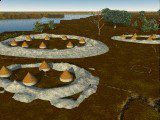 1.SapeloShellRings 1.SapeloShellRings |
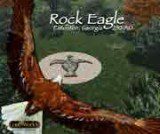 2.RockEagle 2.RockEagle |
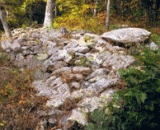 3.FortMountain 3.FortMountain |
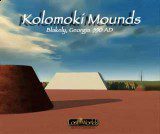 4.Kolomoki 4.Kolomoki |
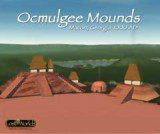 5.Ocmulgee 5.Ocmulgee |
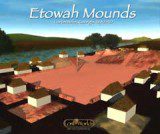 6.Etowah 6.Etowah |
| Above: Watch a short excerpt from the Lost Worlds: Georgia DVD. Buy the DVD or make a donation to help fund future videos and exhibits. Watch more videos at LostWorldsTV and subscribe to our newsletter for updates. |
As impressive as the previously discussed Kolomoki Mounds complex is, the NativeAmerican Mound Builders of Georgia would outdo themselves at the next site in our story: Ocmulgee Mounds. Located in Macon, this ancient civilization consists of seven Indian mounds and associated plazas.
The Great Temple Mound at Ocmulgee was built atop the Macon Plateau and rises 56 feet high from the surface of the plateau. Yet because the mound was ingeniously constructed on the edge of the plateau and the plateau itself was terraced and clay fill added to match the angle of the Temple Mound, the mound rises an impressive 90 feet from the river bank below. It was this imposing view that most visitors to Ocmulgee Indian Mounds saw in prehistoric times since most trade and travel was conducted by dugout canoes along the Ocmulgee river.
View larger map |
| Map of Ocmulgee Mounds. Zoom in to see individual mounds and other features. Click on the blue tabs to learn more about each feature. Explore the site in 3D with the Google Earth plugin. |
Due to its ingenious construction, the top of the Great Temple Mound is significantly higher than the surrounding tree line thus enabling anyone standing here to have a commanding view of the countryside for miles and miles around as well as an unobstructed view of the entire sky dome for astronomical observations. From here one could easily see signal fires or smoke signals from outlying villages warning of invaders or other trouble. Likewise traders could light signal fires atop the Great Temple Mound to announce the arrival of new trade goods. As its name suggests the Great Temple Mound was also home to a large temple which likely doubled as the Chief Priest’s home. Here he kept a perpetual fire burning which was an important element of their religion and myths.
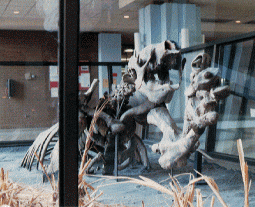
The Ocmulgee Mounds site has been occupied for 12,000 years as evidenced by the Clovis spear point found during excavations. The Clovis people lived during the last Ice Age and used these spear points to hunt mastadons, wooly mammoths, giant ground sloths and other giant animals that once roamed Georgia. Around 2000 B.C., the same time period as the Sapelo Shell Rings, the first small shell mounds were constructed at the site but it wasn’t until 900 A.D. that the monumental constructions began. [View Gallery]
Who Built Ocmulgee Mounds?
At this time newcomers arrived in the region and brought with them corn agriculture, a new style of pottery, new types of arrowheads and a more complex economic, religious and political system. It is thought that these were Muskogean speakers who later were called Creek Indians by Europeans. According to Creek Indian tradition, Ocmulgee Mounds was the site where they “first sat down” after their long migration from the west. Other traditions hold that they originated near “the backbone of the earth” which was their name for the Rocky Mountains. In fact, as we’ll see below, they could have originated as far away as west Mexico and later migrated into the desert southwest before finally arriving at Ocmulgee.
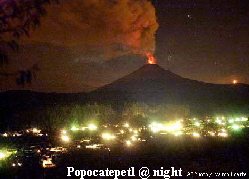 One tribe of Creek Indians, the Cussitaw (Cusseta/Kasihta), have a migration legend which might relate to the settlement of Ocmulgee Mounds. It tells how they originated in a place much farther west, a place where the earth would occasionally open up and swallow their children (a possible reference to earthquakes). Part of their tribe decided to leave this place and began an eastward migration in order to find where the sun rose. On their journey they came to a mountain that thundered and had red smoke coming from its summit which they later discovered was actually fire (a possible reference to a volcano.) Here they decided to settle down after meeting people from three nations (Chickasaws, Atilamas, & Obikaws) who taught them about herbs and “many other things.”
One tribe of Creek Indians, the Cussitaw (Cusseta/Kasihta), have a migration legend which might relate to the settlement of Ocmulgee Mounds. It tells how they originated in a place much farther west, a place where the earth would occasionally open up and swallow their children (a possible reference to earthquakes). Part of their tribe decided to leave this place and began an eastward migration in order to find where the sun rose. On their journey they came to a mountain that thundered and had red smoke coming from its summit which they later discovered was actually fire (a possible reference to a volcano.) Here they decided to settle down after meeting people from three nations (Chickasaws, Atilamas, & Obikaws) who taught them about herbs and “many other things.”
From these references one can speculate that these people migrated from Mexico which is west of Georgia and has both earthquakes and active volcanoes. (For a more in-depth analysis of the Creek migration legend, read “Were Georgia’s Muskogee Creek Indians from West Mexico?“) Mexico is also the birthplace of corn agriculture, a defining characteristic of these newcomers. It is also in Mexico where we find cities consisting of flat-topped pyramid mounds arranged around open plazas which is the most noticeable feature of town planning at Ocmulgee. (Continues…)

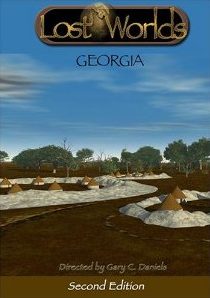
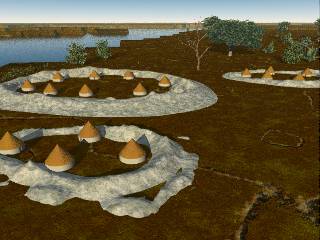
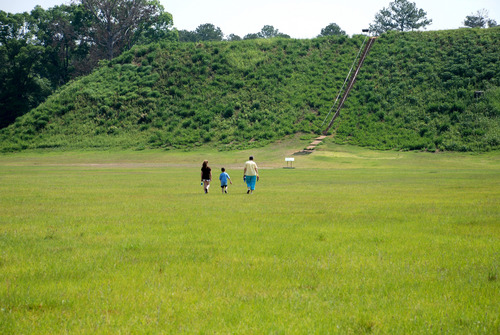
Pingback: Georgia mounds | Keikohiraoka